
CUL#1
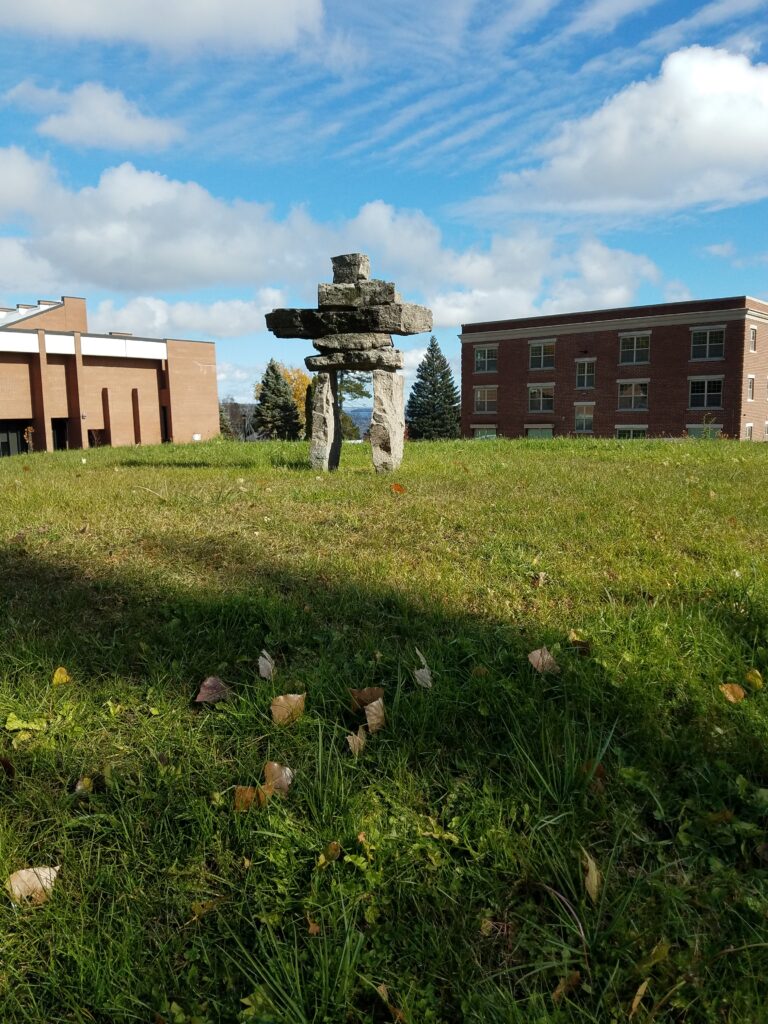
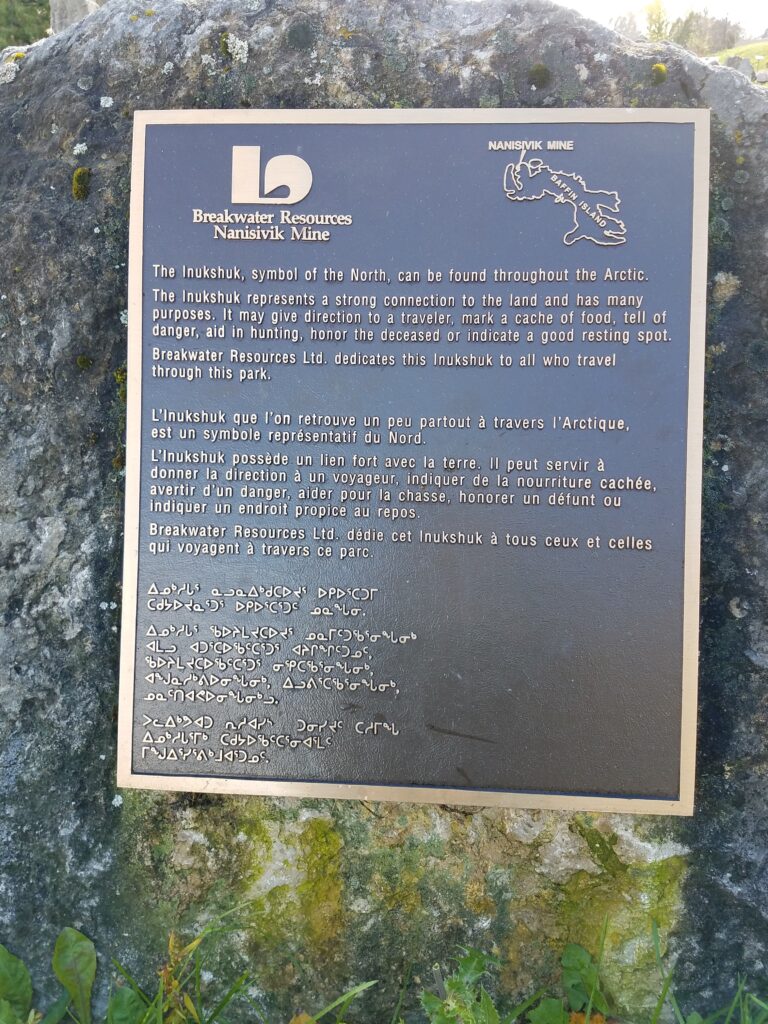
The Inukshuk on the crest of the amphitheatre was constructed courtesy of Breakwater Resources (operators of the Nanisivik lead/zinc mine – 1976 -2002) in consultation with the Iniut of Baffin Island. It was pre-assembled, numbered, dis-assembled, packed in crates, and shipped to Haileybury via ship, train, and truck, where it was pieced together and erected in its present position. As you can see from the accompanying plaque, Inukshuks are used in the barren arctic as markers, particularly to keep direction … and have now become a symbol not only of RockWalk Park, but also of Canada.
Internet travel…seek: Nanisivik Naval Facility
CUL#2
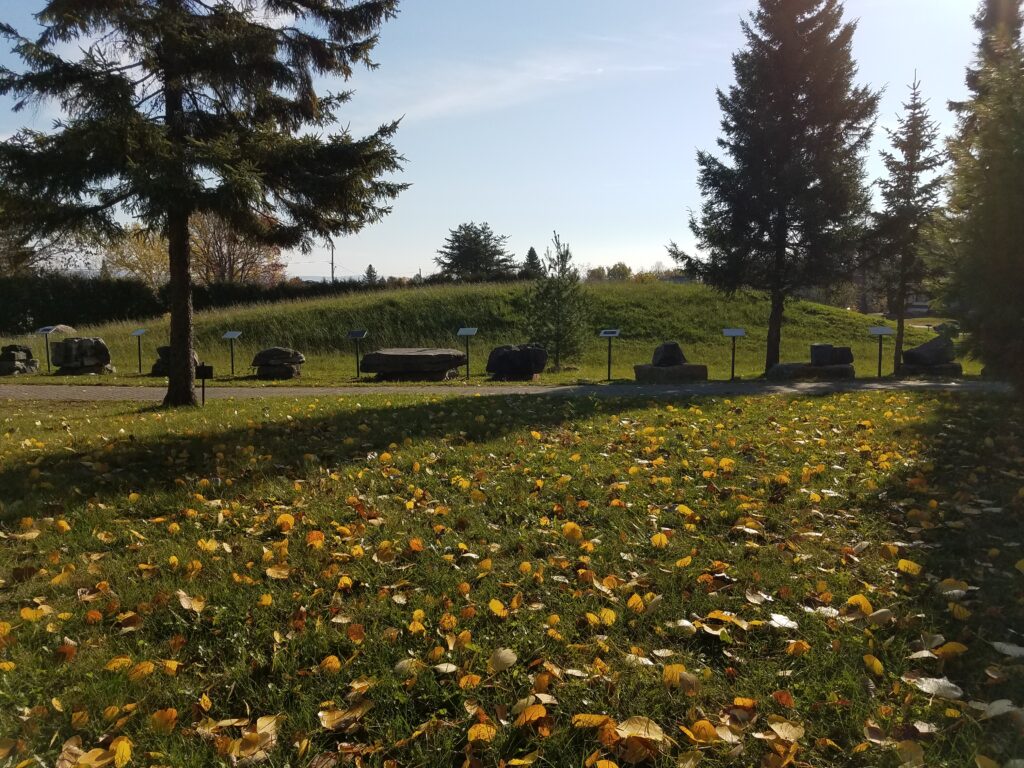
The Drumlin: Developed from fill provided by the digging of a basement under the College Dormitory, this is actually an attempt to develop a glacial landscape feature. Drumlines have a steep “snout” to show what direction the ice was moving, and a long tail to show where it came from. This (fake) Drumlin shows the exact path that the Laurentian Glacier moved along the west shore of the Temiskaming Fault. As a cultural feature, it is well established that humans have, for many Millennia, used the high points of landforms as locations from which to view the distant surroundings.
CUL3#
Map of Canada showing the major geological features and past mining activity. It was originally proposed for a section of the brick pathway.
Sponsor Required
CUL#4
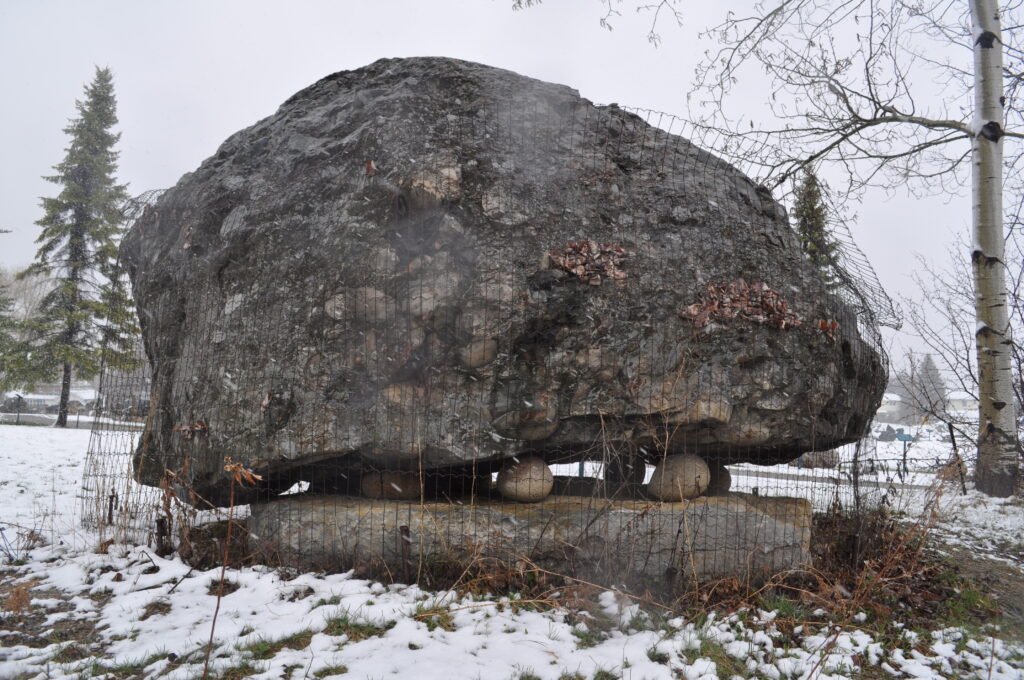
This huge rock is a glacial erratic that was deposited during the last ice age (about 15,000 to 10,000 years ago) near the Haileybury Town workshops up on View Street West. It took many attempts with several cranes before we were able to lift and move it. On the last attempt, an 80-ton crane was able to lift it and weigh the rock at 45 tons (Imperial measure).
As you can see, this sample is resting (or ‘perched’) on several small rounded granitic boulders. The reason for this is to simulate a perched erratic found on the shores of Lake Abitibi, which also shows a pictograph named ‘The Hand of God’. (Another perched erratic has been located at Lake Temagami, while a third rests at the former outlet of the Montreal River, where it once entered Lake Temiskaming…prior to its 1971 diversion to create the Lower Notch hydro installation).
Such an unusual creation has spiritual significance for the native people of the region, and we hope that the exhibits in this park will help to share cultural and reverent influence that rocks and rock patterns have created in different peoples of the world.
Internet spiritual connections: Erratics: Exotic evidence – Bill Steer 2021
CUL#5
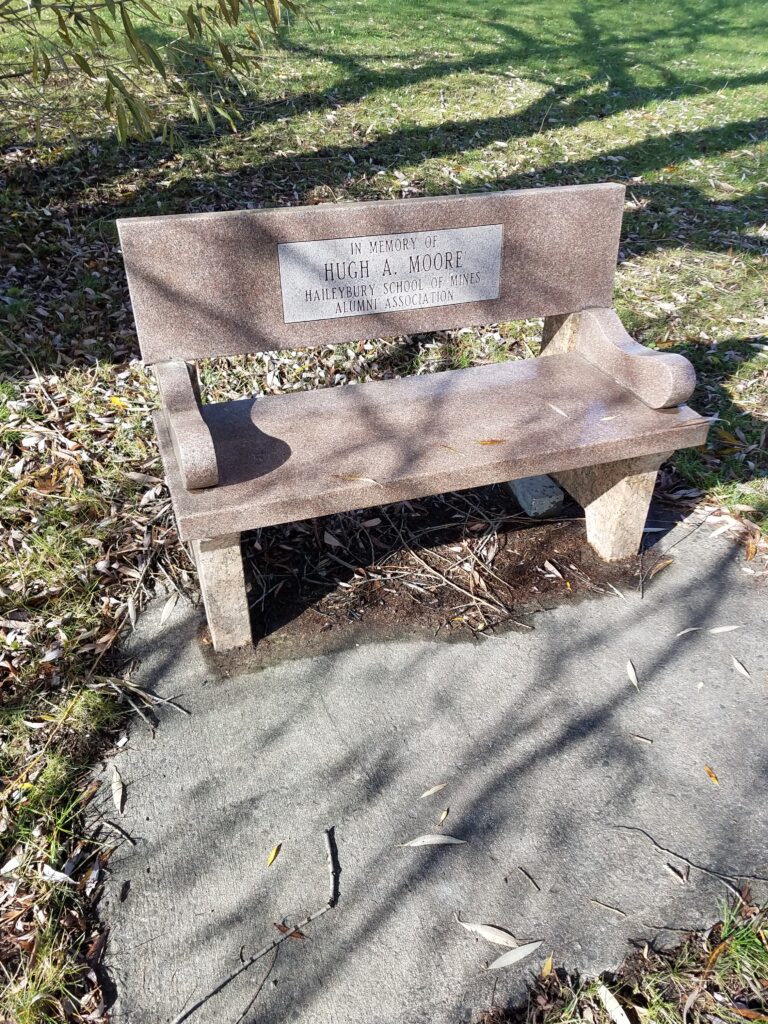
Since the late 20th Century, there has been an increased development in using cut and polished stone for both outdoor and indoor furniture. This was dependent on the new technology equipment
available to cut many shapes, as opposed to the traditional square or rectangular headstones
and monuments of past generations.
On the internet seek: Granite – Affaires Lac-Megantic
https://affairesmegantic.com
CUL#6
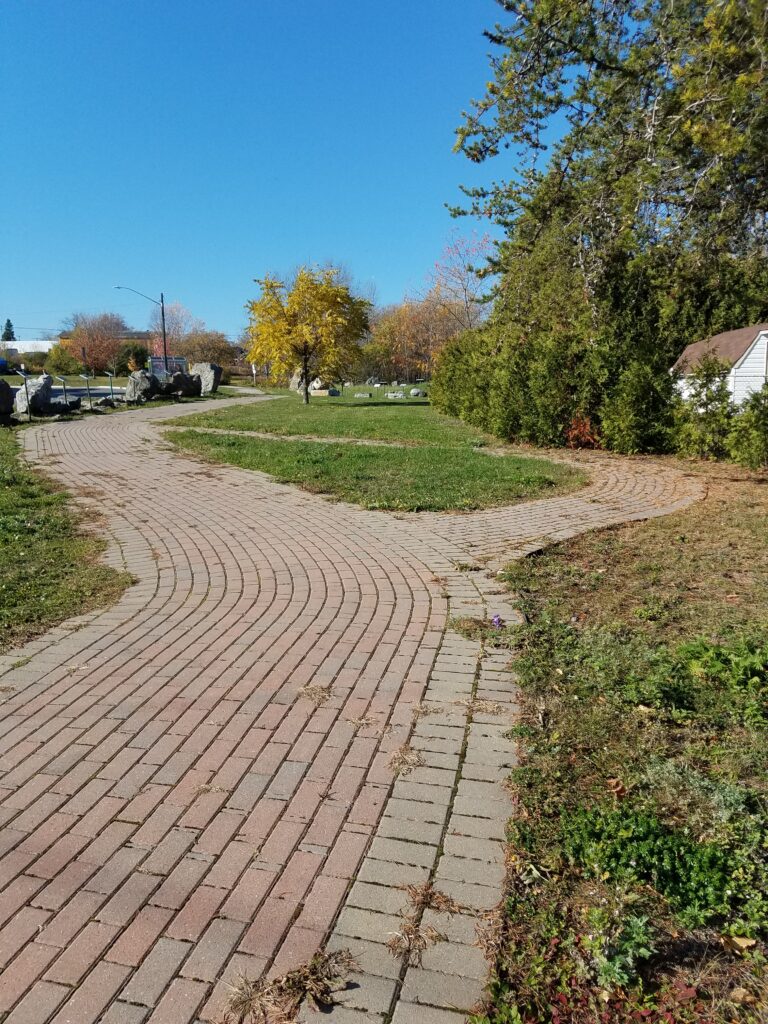
The formal entrance to RockWalk Park is destined to be at the corner of Latchford and Probyn Streets, and facing the turn off the intersection. A pathway that circles the proposed site has been put in place. This will be a primarily stone structure.
A sponsor is required.
CUL#7
There is one rock exhibit situated in what is proposed to be a ZEN GARDEN (Garden of Meditation and Tranquility). This idea was based on a much larger Japanese Memorial Garden in the Arboretum of the University of Guelph (see internet). It was felt that the partial shielding of the pine trees could be enhanced by bamboo fence and the typical wooden arches of such sites. This was an idea of the RockWalk Park Landscape Architect, Mary-Jo Gordon. Japanese Gardens make the most out of a very small space. RockWalk Park Inc. continues to look for a sponsor.
CUL#8
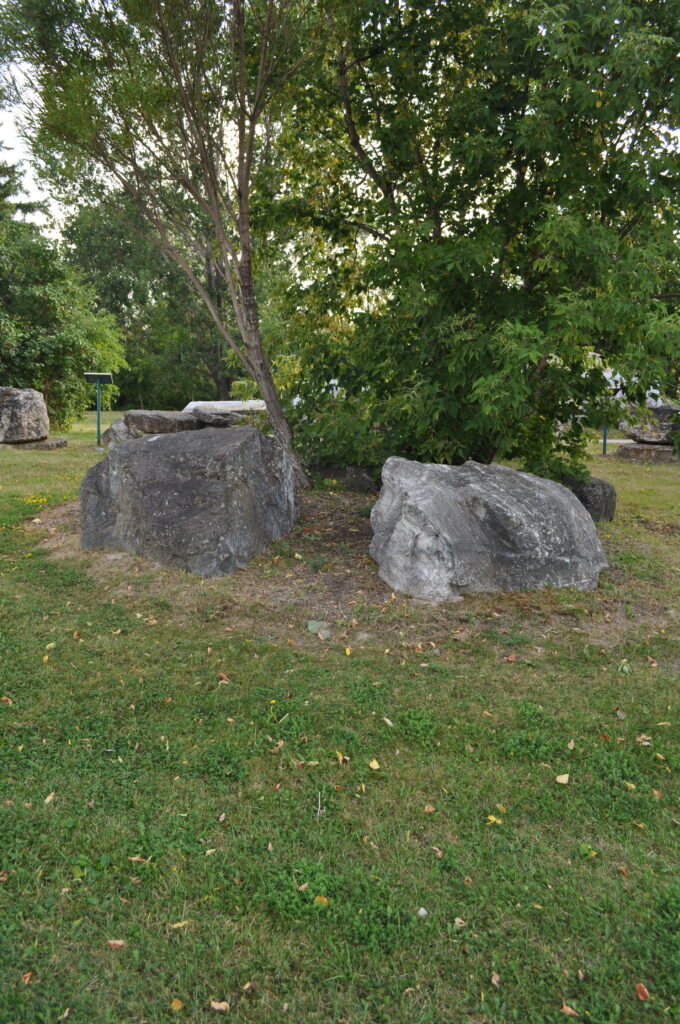
This circular space, across the pathway from the Inukshuk, is the exhibit area for the Marmarton Mine suite of rocks. We use this site to test the skills of “budding geologists”. Refer to “The Marmaton Experience” at the end of this Guide for more details (and internet connections).
CUL#9
Dry Stone Wall …In and around Cobalt, you can still see the remains of “Dry Stone Walls” primarily made from hand placed blocks of (blasted) Nipissing Diabase. Since 2012, training has been available for the construction of this feature by DIY Landscapers. It is proposed that RockWalk Park be a training site for this activity.
Internet seek: https://drystonecanada.com
CUL#10
Stone Sculptures: In New Brunswick, (and nearby Provinces and States) there are a series of massive granite artworks that have been sculptured in competition by sculptures from around the globe. These are distributed along the roads of the region in order to attract tourists. It is proposed that an annual competition be developed for RockWalk Park, (and Northern College parking lot) along the same vein. It would require sponsorship by a major Canadian mining industry partner.
Internet Seek: http://sculpturesaintjohn.com
CUL#11
Outdoor Exercise Park: it is proposed that an area (possibly near the new dormitory) be designed to feature exercises that require the use of various sizes and shapes of rock (boulders) to provide a unique exercise program for children, students, and adults.
Sponsor required.
CUL#12
This path, expected to be located between PGS #5 and Cul #5 will be modelled after a similar construction in the Botanic Gardens of Singapore, where rocks and reflexology have a long standing partnership. Visitors shed their shoes and socks and walk along the path to take advantage of the therapeutic effects of the
different size pebbles.
Internet: Seek “Reflexology Paths”
CUL#13
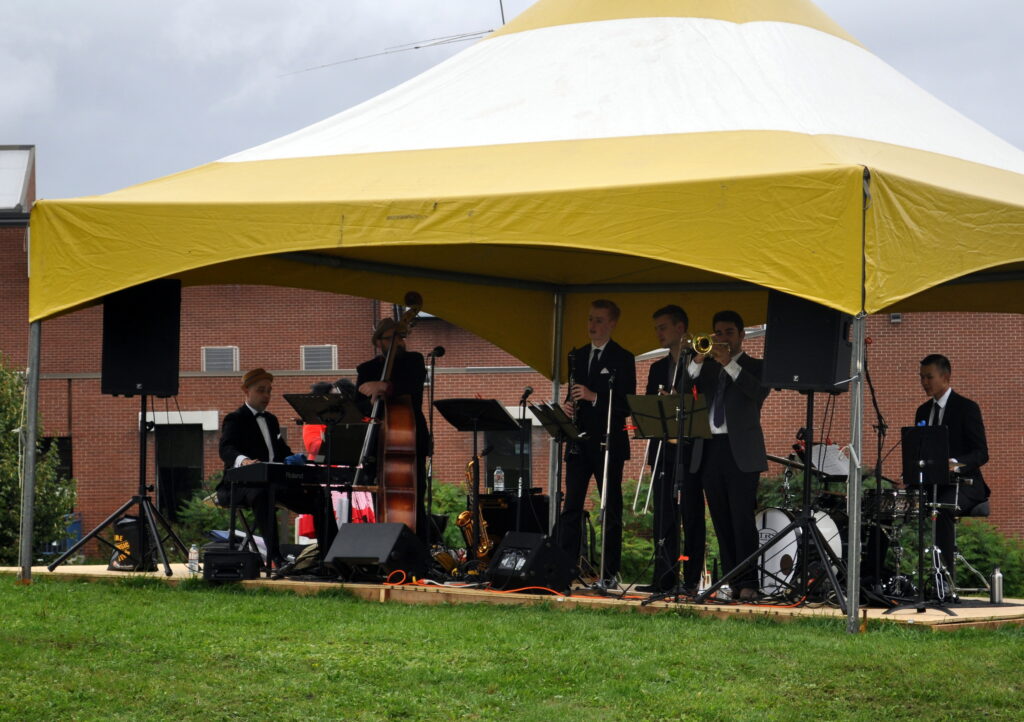
This was originally supposed to be a rock maze for kids. This changed in 2017 when we
realized that we needed an outdoor stage. A wooden platform was built beside the Inukshuk, just large enough to support a band and singer. The stage faces the area under a large Cottonwood tree. The site was used as such once, during the Ontario 150 years celebration, and worked out well. It is now proposed to develop a seated area on limestone blocks for this site.
It requires a sponsor.
CUL#14
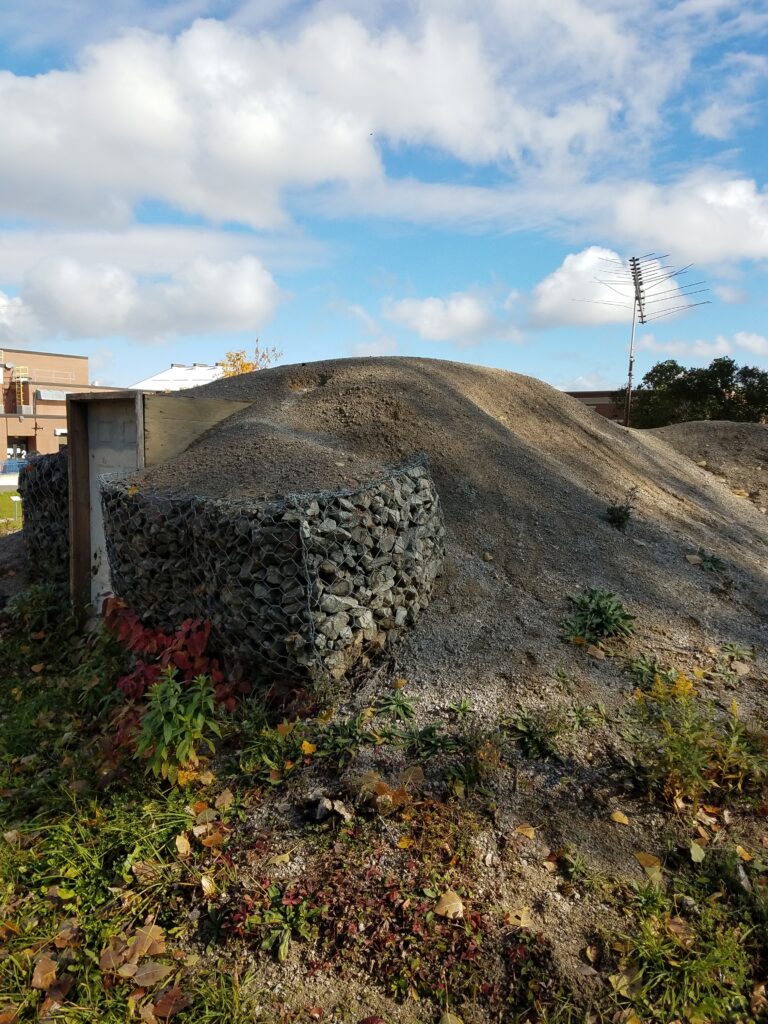
The crazy-looking mound of gravel with a TV antenna sticking out the top has been the subject of much speculation after being first erected. However, it attempts to reproduce, within a small area, the environment of Coober Pedy, South Australia, where most of the world’s supply of white opals is mined. In that area, the summer temperatures commonly exceed 500C, which is far too hot for working, let alone living.
As a result, the original miners lived underground, and the only sign of their homes is what you see – a mound, a TV antenna, a smokestack, and a door. In fact, the miners have created an underground town, with a cinema, church, bowling alley, several stores and a motel beneath the ground. In fact, the name, ‘Coober Pedy’ is said to be an Aboriginal name for ‘white man in a hole’. 60 % of the town lived below ground in 2016.
The environment is generally so desolate, and early white inhabitants were so desperate to see a tree that they manufactured an artificial one from scrap metal taken off car wrecks along the highway. Here, we have an excellent replica manufactured in a more Canadian style by welding students from the Kirkland Lake campus of Northern College.
Internet travel…seek: Unearth Coober Pedy by Jennifer Nalewicki
CUL#15
Rock games that would include 1. a CHESS board etched on a cut and polished rock ‘table’ (using ‘sliced’drill core as play pieces) 2. WARI (aka MANCALA)…this is an African game that requires a sequence of tiny pits cut into a rectangular rock ‘table’. The game requires tiny pebbles of different colours to be moved from pit to pit. Instructions for both games must be supplied on attached laser signage. There is room for these two games to be placed, with
rock seating, in the Queen’s Courtyard. 3. “Duck On A Rock” is a Huron based Indigenous game that is a feature of the “Huronia Museum and Huron Ouendat Village” (see internet) at Midland, Ontario. It teaches children and youth how to TRADITIONALLY survive and
feed both themselves and their families by pitching stones at a stone sculpture of a duck.
Proposed for the more seclude area to the west of the Bus Stop Shelter.
A sponsor is required for all three games (individually).
CUL#16
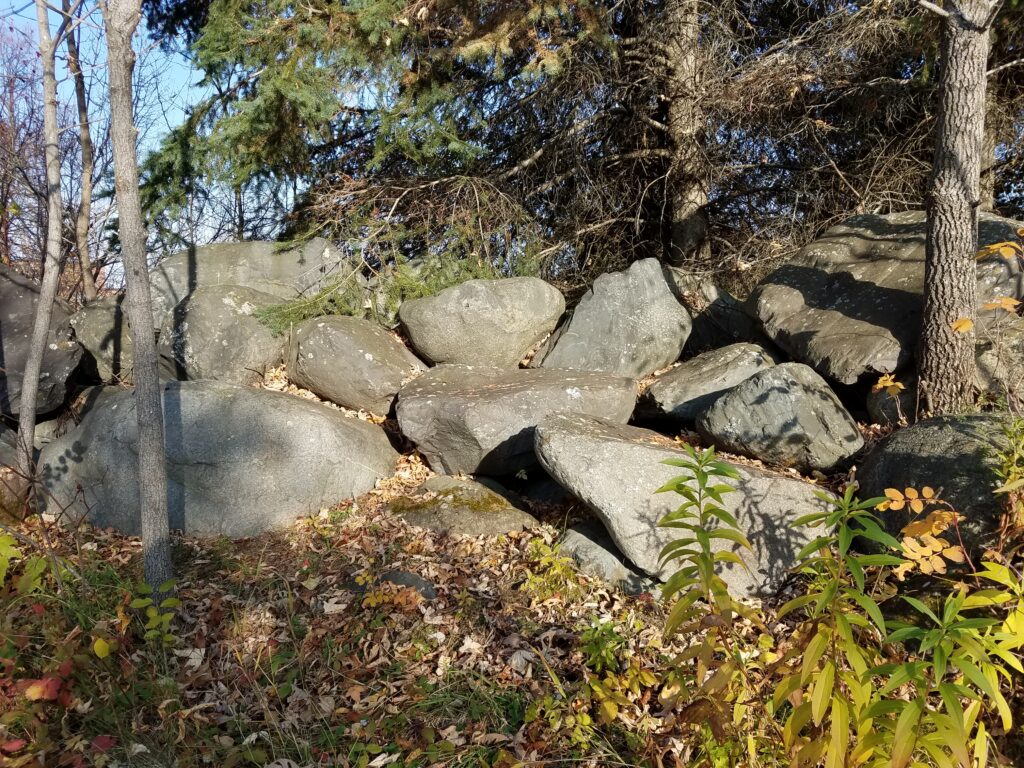
At the end of this path loop, you’ll see a stone boulder wall, which is similar to typical fences constructed on farmlands in Ontario, as well as stone barriers erected in Europe to keep out invading armies.